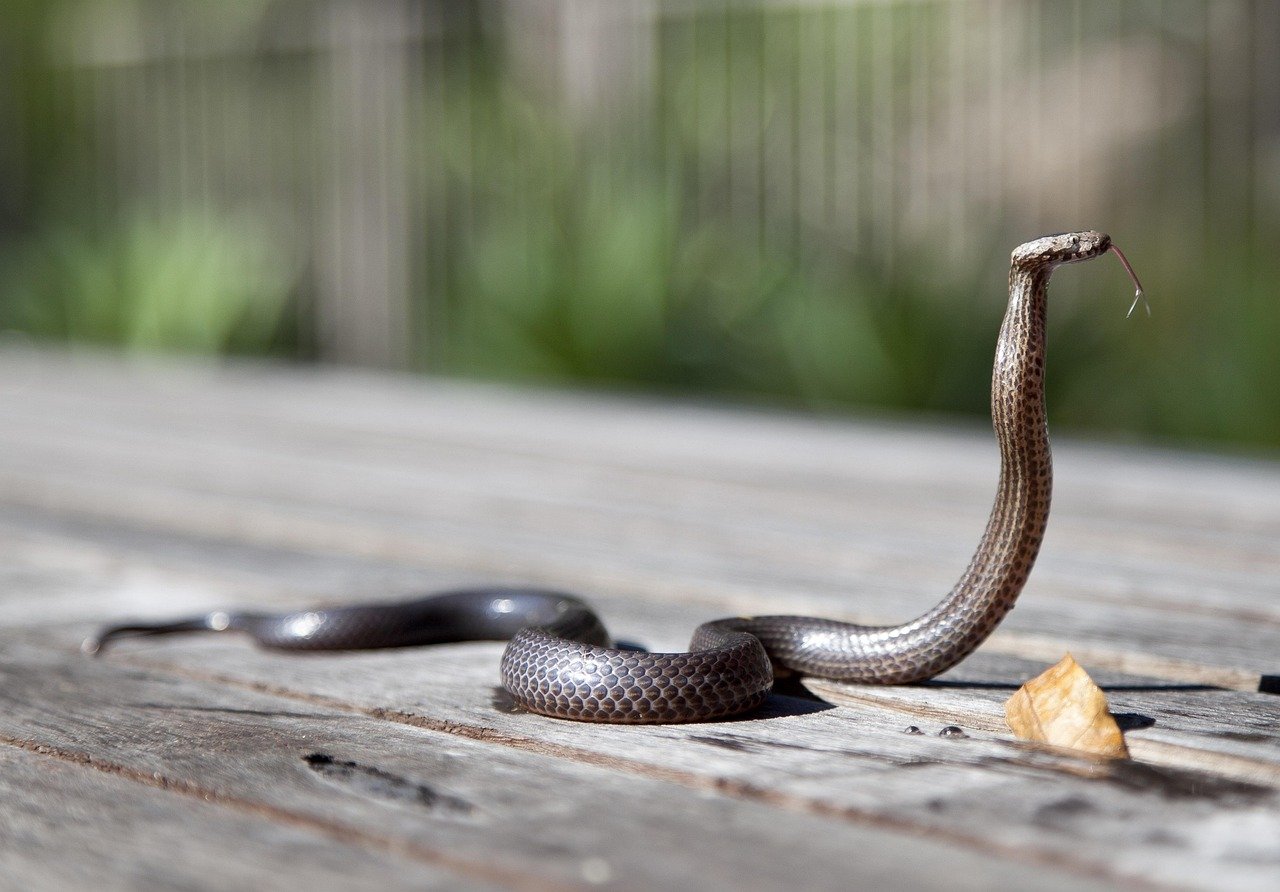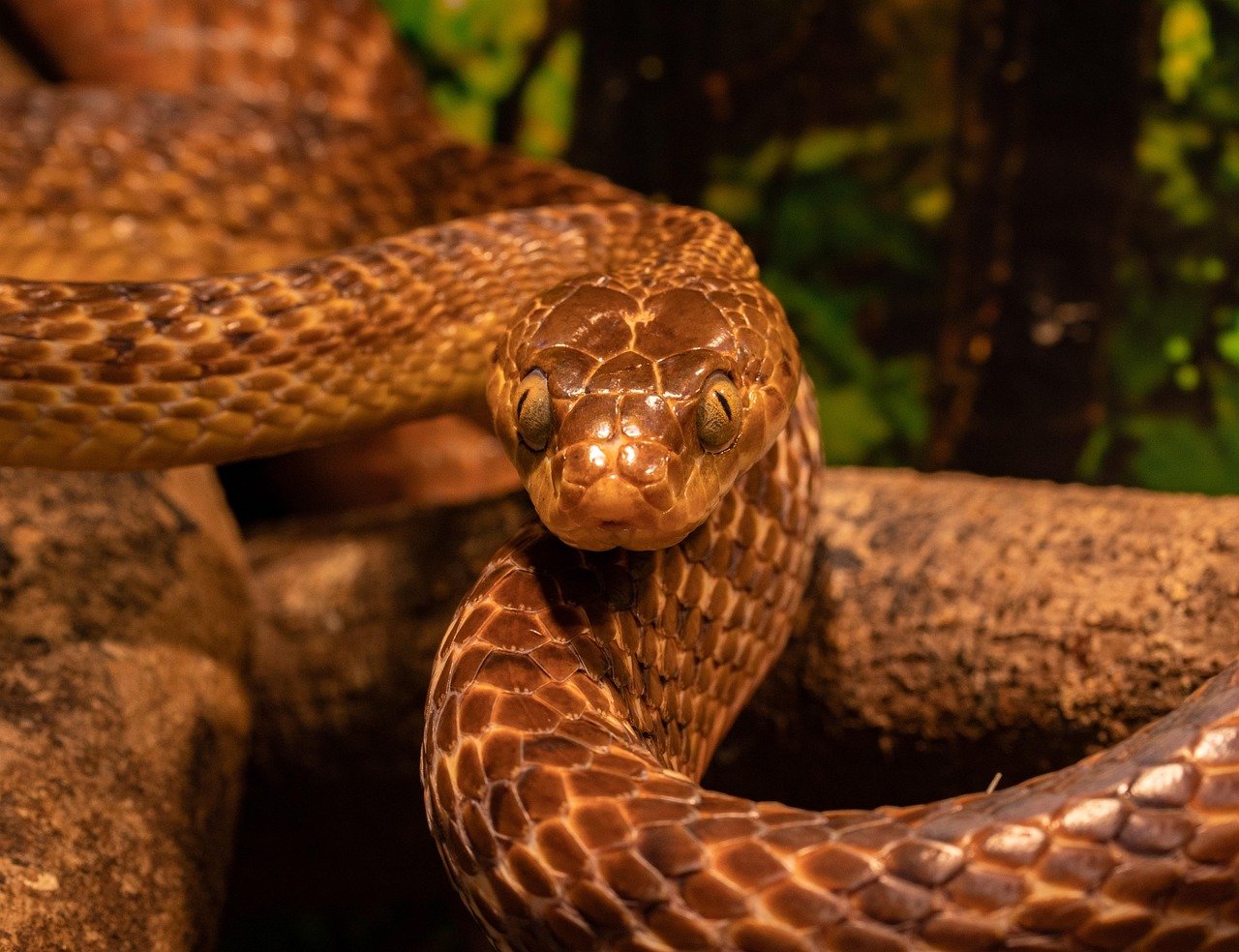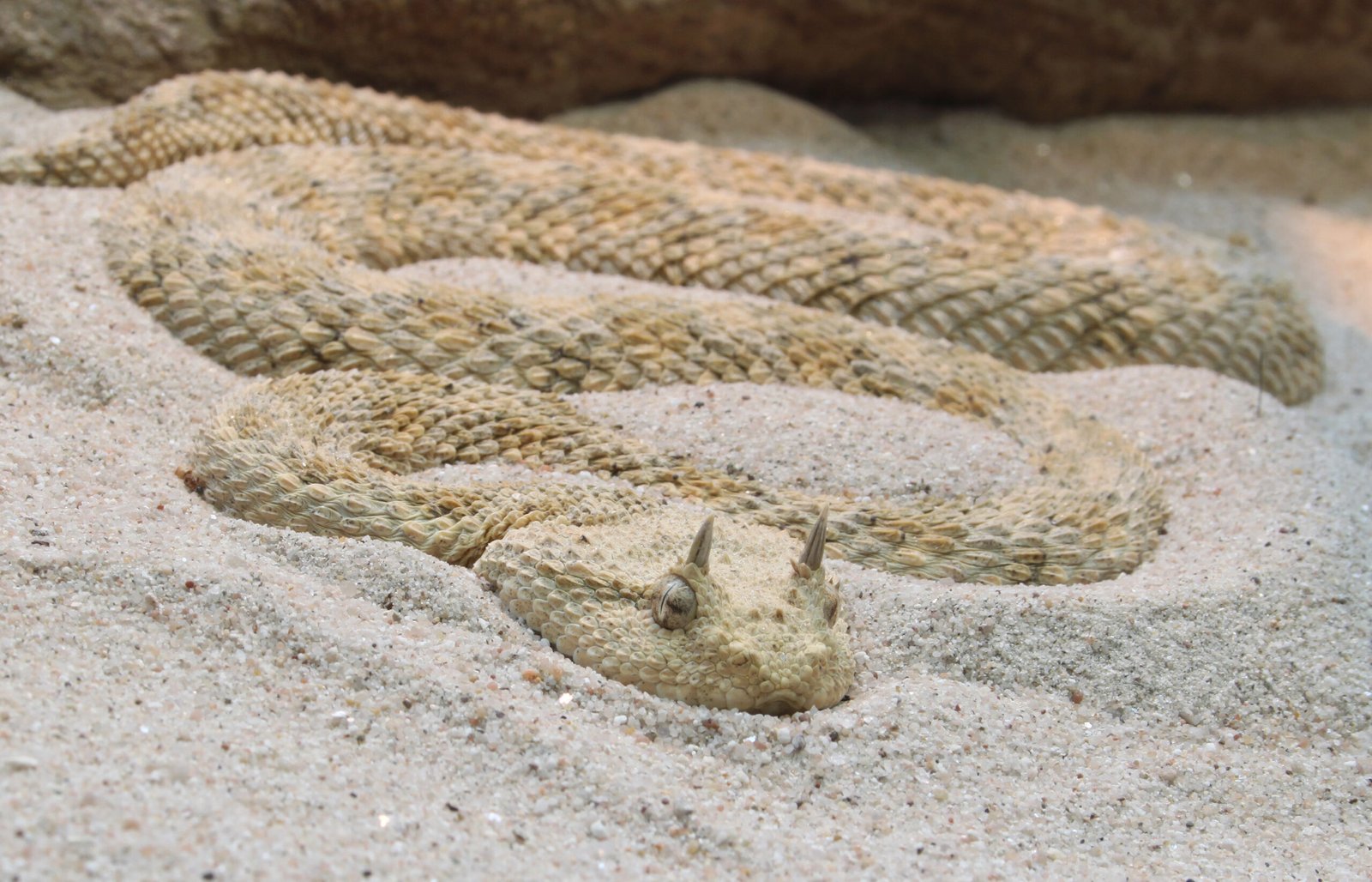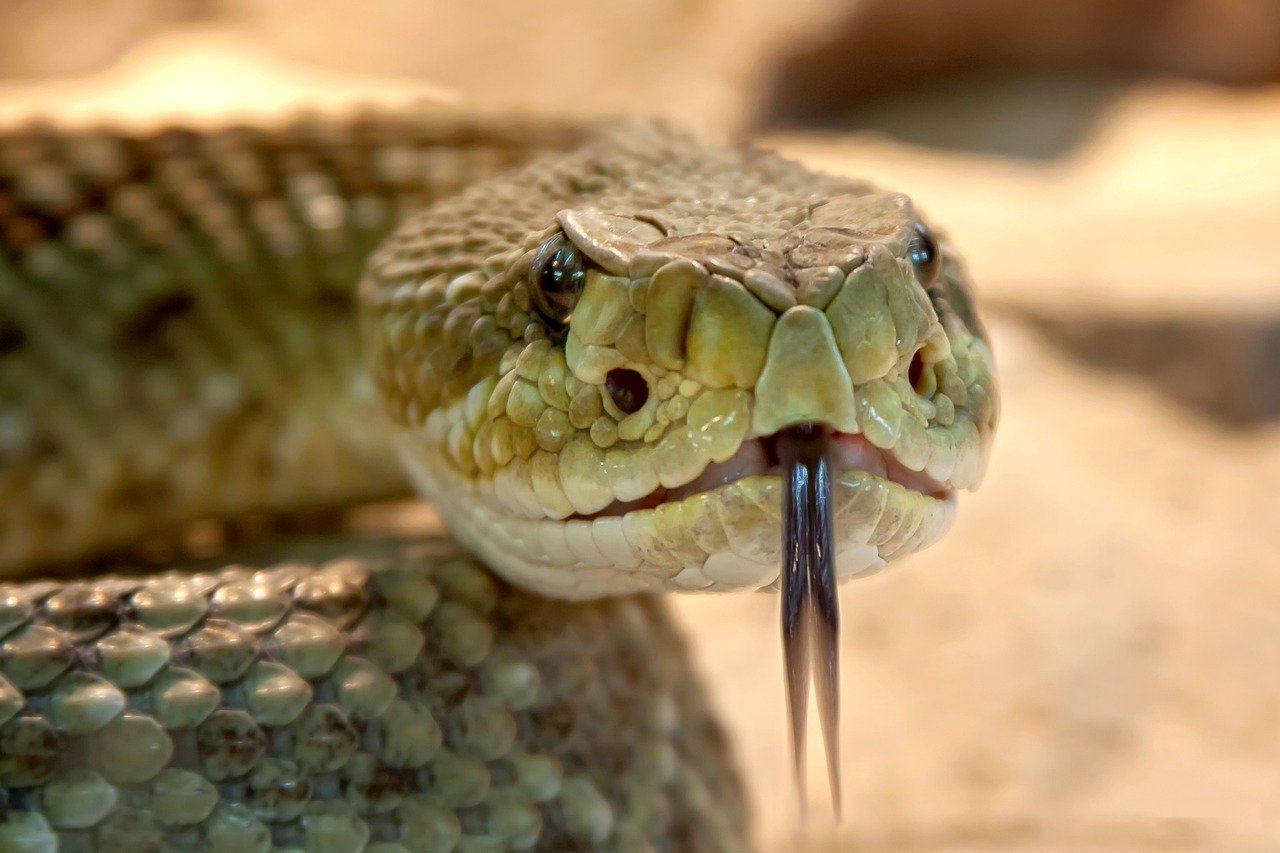Spotting the difference between a venomous and non-venomous snake isn’t just about looks—behavior plays a big role too. Venomous snakes often display defensive traits like hissing loudly, flattening their bodies, or forming an S-shape before striking. Non-venomous snakes, on the other hand, usually try to flee or mimic more dangerous species as a bluff. Paying attention to movement patterns, posture, and reactions to threats can give you some solid clues. Just remember—when in doubt, always keep your distance and leave snake handling to the pros!
Head Raising and Posture: The First Clues

One of the first things to notice about a snake is how it holds its head and body. Venomous snakes, such as cobras and vipers, often lift the front part of their bodies off the ground and may flatten their necks or bodies to appear larger and more threatening. Cobras, for example, famously spread their hoods and rise up in a mesmerizing display. Non-venomous snakes, on the other hand, usually keep their bodies closer to the ground and may simply try to slither away if threatened. Some harmless snakes, like the hognose, will mimic a hooded cobra by flattening their neck, but their act is usually less convincing and short-lived. Observing how a snake positions itself can offer the first hint as to whether you’re dealing with a potentially dangerous reptile or a harmless imposter.
Defensive Displays and Bluffing Tactics

If you’ve ever seen a snake coil back and start hissing loudly, you might have witnessed a defensive display. Venomous snakes, such as rattlesnakes and puff adders, often make dramatic displays when threatened. They may coil tightly, hiss, shake their tails, or even strike as a warning. Yet, some non-venomous snakes are astonishing actors. For instance, the eastern hognose snake can flatten its head, hiss, and even play dead to avoid confrontation. Milk snakes and kingsnakes will mimic the rattling of a rattlesnake’s tail by vibrating their own tails rapidly against dry leaves. These behaviors are designed to scare off predators, not to attack. Recognizing the difference between a genuine threat and a bluff can help you stay safe without unnecessarily harming a harmless snake.
Striking Behavior: Fast or Hesitant?

Venomous snakes often strike with precision and speed, aiming to deliver venom efficiently. They tend to be quick and decisive in their movements, especially when cornered or startled. Pit vipers, for instance, can strike at lightning speed, covering a third of their body length in a flash. Non-venomous snakes, however, might strike more slowly or not at all. Their strikes are often more about scaring away threats than actually biting. Some may even strike with their mouths closed, making little contact. Observing the speed and commitment behind a snake’s strike can offer valuable insight into its potential danger.
Tail Movements: Rattling, Vibrating, or Still?
The rattlesnake’s signature sound is perhaps one of nature’s most recognizable warnings. This distinct rattle is unique to venomous rattlesnakes, signaling that you should keep your distance. However, many non-venomous snakes, like the harmless rat snake, will shake their tails rapidly when threatened. If their tail hits dry leaves, it can mimic the sound of a rattler, tricking would-be predators. Venomous snakes tend to use their tails as a clear warning, while non-venomous snakes rely on mimicry. Paying close attention to tail movement and environment can help you determine whether you’re hearing a genuine rattle or just a clever imitation.
Fleeing or Standing Ground?

Venomous snakes often stand their ground when confronted, especially if they feel cornered. They may adopt a defensive posture and warn you with hissing or rattling. In contrast, most non-venomous snakes prefer to escape and avoid confrontation altogether. They usually slither away at the first sign of danger, rarely sticking around for a fight. Of course, there are exceptions—some venomous species, like the coral snake, are incredibly shy and will flee if given the chance, while the non-venomous hognose snake famously plays dead rather than running away. Watching how a snake reacts to your presence can give you a strong clue about its personality and potential threat.
Feeding Habits and Hunting Styles

Venomous snakes often hunt using ambush tactics, relying on stealth and surprise. Pit vipers, for example, use heat-sensing pits to detect warm-blooded prey, then strike with venom to immobilize it. Elapids, like cobras, also use venom to subdue their prey quickly. Non-venomous snakes, however, tend to rely on constriction or simply overpowering their prey. Kingsnakes and rat snakes will wrap their bodies around their meal and squeeze until it stops moving. Observing a snake’s hunting style—whether it strikes quickly or wraps around its food—can provide important behavioral clues about its identity.
Body Language: Coiling, Flattening, and S-Shapes

Body language is a snake’s silent vocabulary. Venomous snakes often coil their bodies tightly and may flatten their heads or necks to look more formidable. The classic S-shaped coil is a telltale sign that a snake is preparing to strike. Non-venomous snakes, while they may also coil, tend to do so more loosely and may not flatten their heads as dramatically. Some non-venomous species mimic the S-shape to appear more threatening, but their performance is rarely as convincing. Watching for these subtle cues in body positioning can help you read a snake’s intentions and potential danger.
Movement Patterns: Sluggish or Agile?
Venomous snakes often move with deliberate, controlled motions. They may appear slower or more purposeful, conserving energy for a quick strike if necessary. Non-venomous snakes can be more erratic or agile, darting away quickly when startled. Some, like the black racer, are incredibly fast and will flee at the slightest disturbance. Observing a snake’s movement—whether it’s cautious and slow or quick and darting—can offer another layer of information to help you make an educated guess about its nature.
Vocalizations: Hissing, Growling, and Silence

While snakes don’t have vocal cords, many produce sounds by forcing air through their mouths or vibrating their tails. Venomous snakes, especially vipers and cobras, are known for their loud hissing or even growling-like noises. This is a clear warning to stay away. Non-venomous snakes, while they can hiss, usually produce softer sounds or rely on tail vibration for effect. Some snakes remain completely silent, hoping their camouflage does the talking. Listening carefully to a snake’s “voice” can help you pick up on its confidence or insecurity.
Camouflage and Confidence

Venomous snakes often rely on their potent venom as a last resort, preferring to blend in with their environment to avoid confrontation. Their confidence comes from knowing they have a powerful weapon if needed. Non-venomous snakes, lacking this advantage, tend to be more skittish and rely heavily on camouflage or quick escapes. They may freeze, hoping you won’t see them, or bolt at the first sign of danger. Noticing whether a snake trusts its disguise or seems eager to get away can be a subtle but telling sign.
Social Behavior: Solitary or Social?

Most snakes are solitary, but their social tendencies can sometimes hint at their venom status. Venomous snakes, like copperheads, may be seen basking in groups during cooler months, but generally keep to themselves. Non-venomous species, such as garter snakes, are more likely to be found in larger gatherings, sometimes tangled in “snake balls” during mating season. While this isn’t a foolproof method for identifying venom, noticing group behavior can add another piece to the puzzle when observing snakes in the wild.
Reactions to Human Presence
Perhaps the most telling difference comes when a snake encounters a human. Venomous snakes are more likely to stand their ground, issuing clear warnings like hissing, rattling, or displaying their hood. Non-venomous snakes, for the most part, will try to flee, play dead, or put on a harmless show. As a snake lover, learning to read these behavioral cues not only deepens your understanding but also helps you appreciate the nuanced language of these fascinating reptiles. The next time you cross paths with a snake, you’ll be ready to interpret its actions—and maybe even save a life, human or snake alike.
Understanding snake behavior can go a long way in keeping you safe and calm when you encounter one. While certain movements and postures may hint at whether a snake is venomous or not, it’s always best to observe from a distance. Even non-venomous snakes can bite if they feel threatened! So, use this knowledge as a guide, not a green light to get too close. When in doubt, admire wildlife safely—and leave the handling to the experts.

Esther is from India; the heartbeat of South Asia, holding a Master’s degree in Zoology and a postgraduate diploma in Animal Welfare. Her enthusiasm for animal welfare drives her passion and dedication to working for animals, ensuring their well-being, and advocating for their rights. With a solid academic background and hands-on experience, she is committed to making a positive impact in the field of animal welfare. In her free time, she enjoys embroidery and sewing. As a Chennaite from Tamil Nadu, Esther loves Bharathanatyam, an Indian classical dance form.






